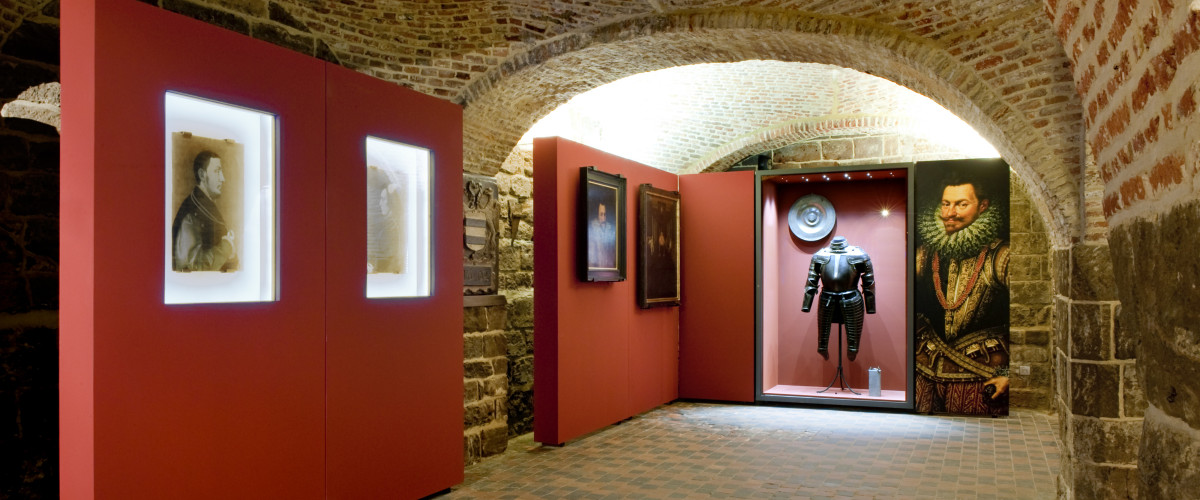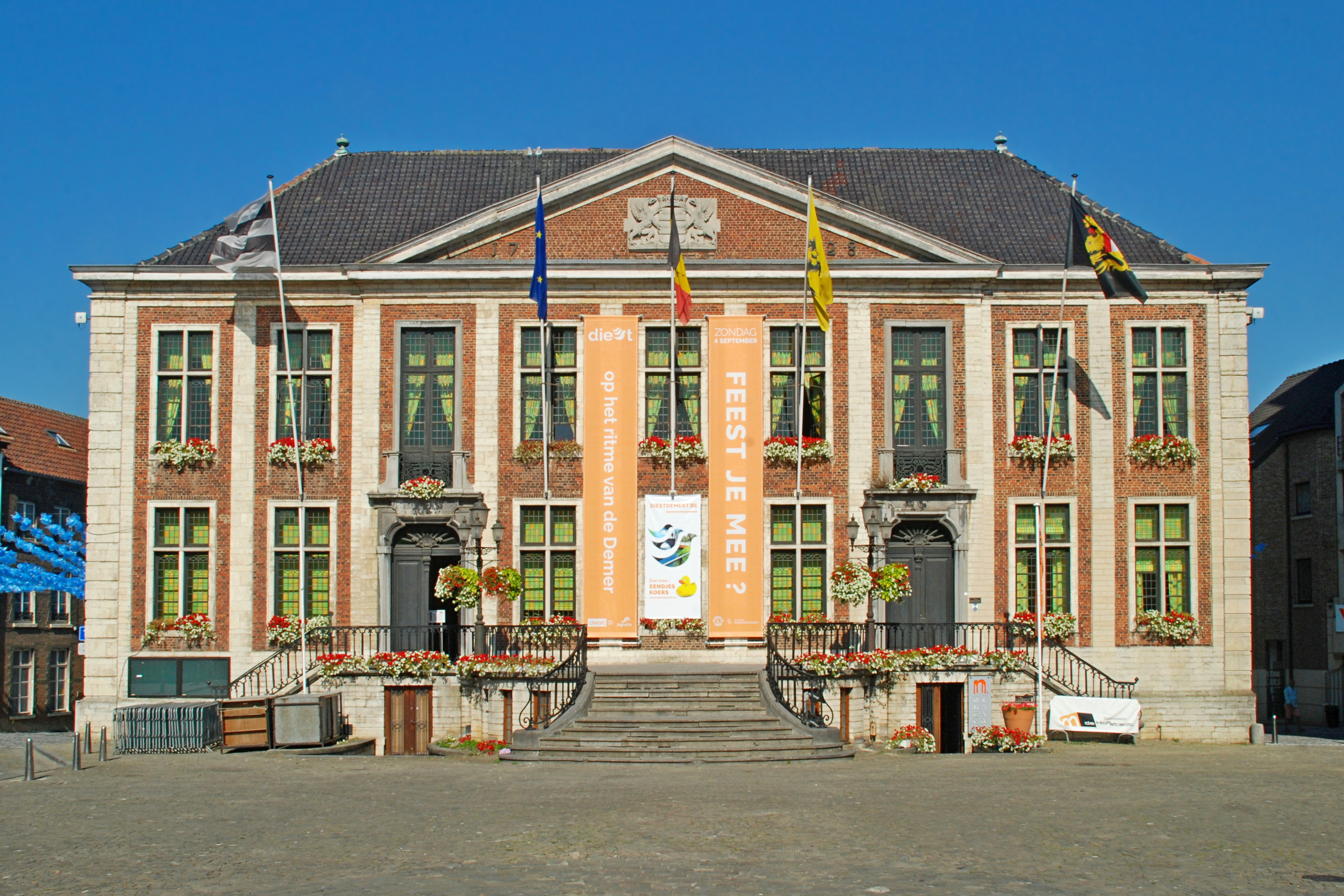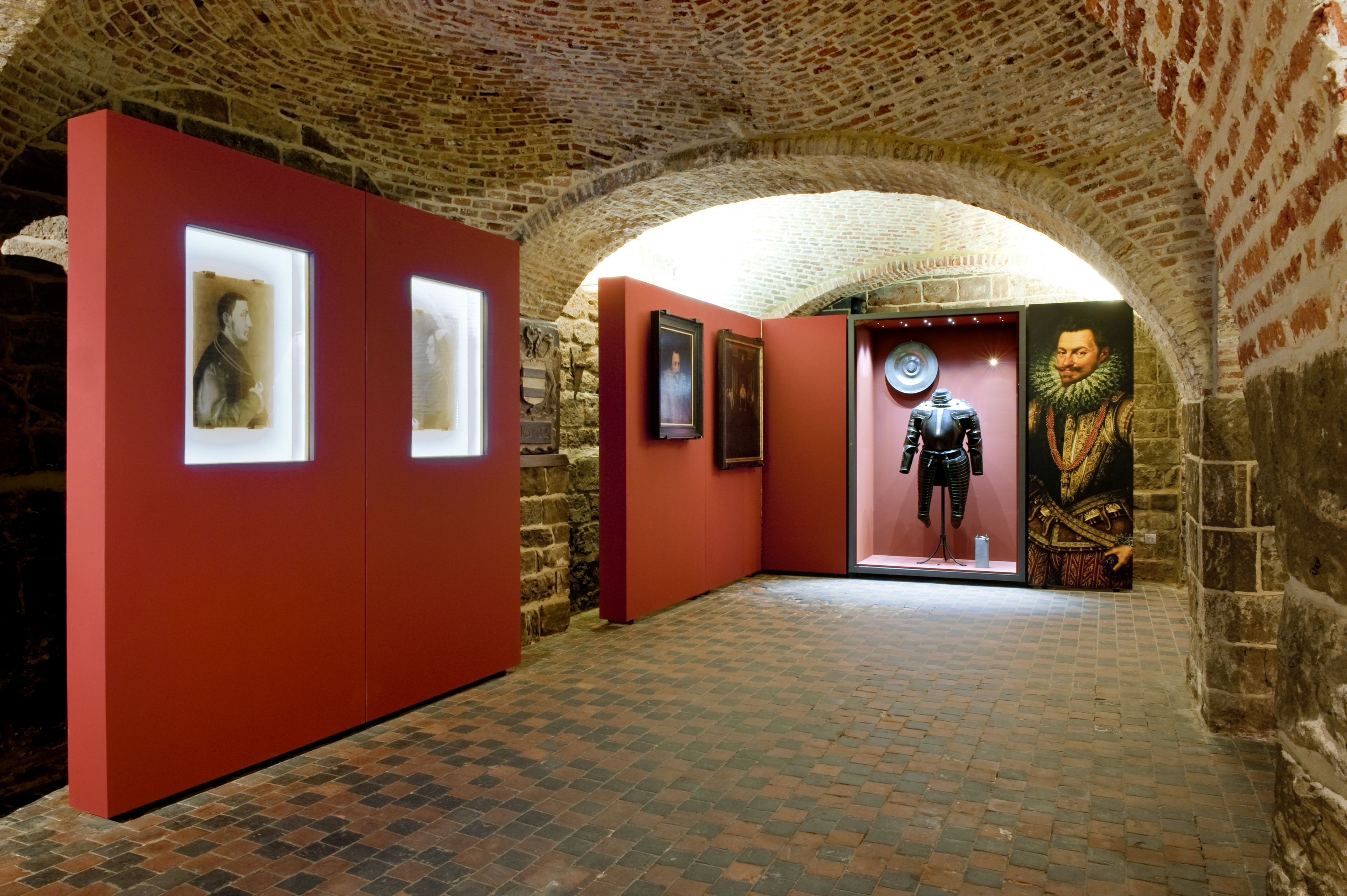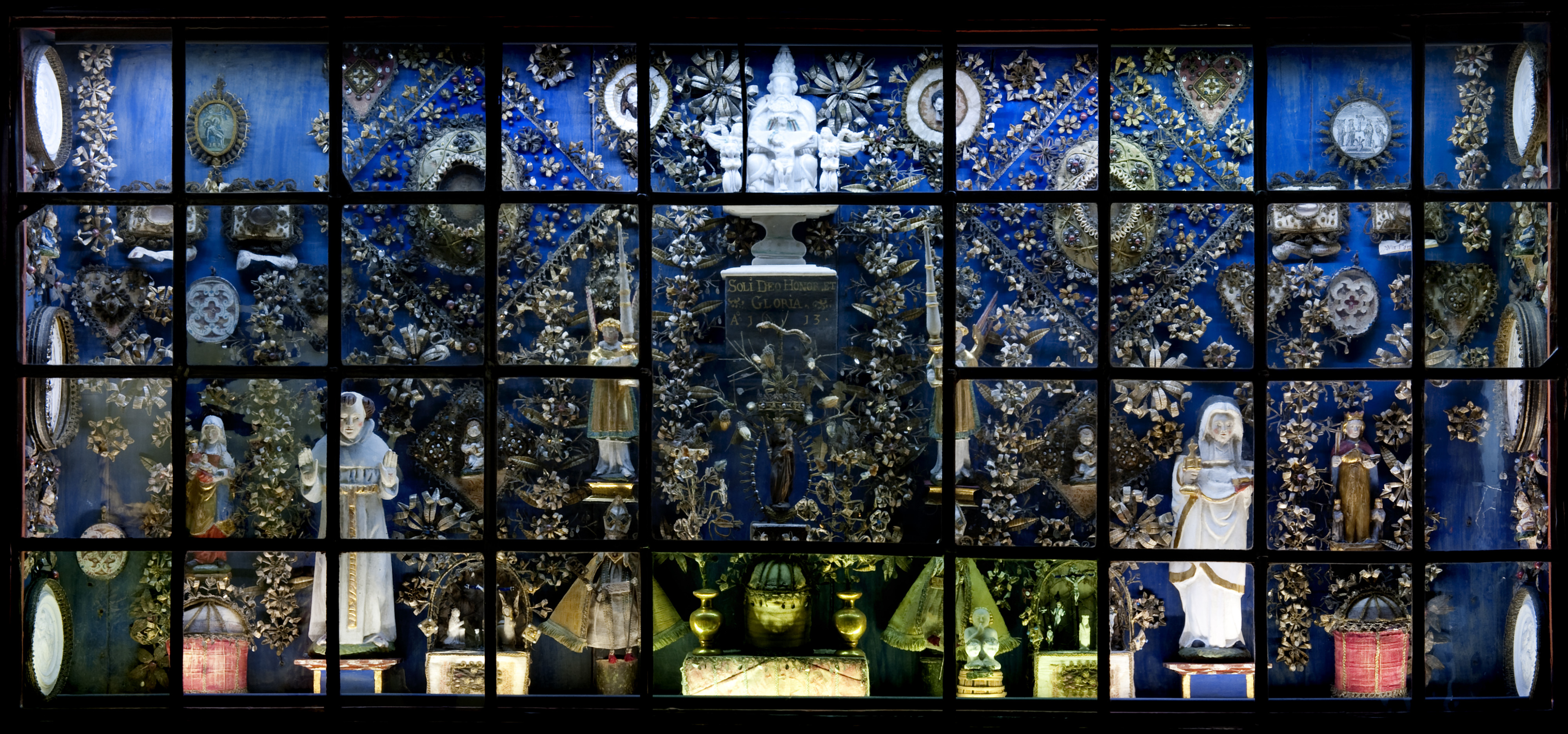Explore Diest and be fascinated by exceptional masterpieces created by, created for or inspired by... women! Depart from the beguinage, the former walled community of women within the city. Then continue on to the Sint-Sulpitiuskerk on the Grote Markt, in search of the Madonna of Diest, to conclude your visit at the De Hofstadt museum with several female masterpieces.
City Museum 'De Hofstadt'
The city museum provides access to the only remaining room of the medieval town hall. The Gothic hall is now situated half underground, even though it definitely did not serve as a basement at the time. During the excavations for the foundations of the tower of Sint-Sulpitiuskerk in the early 16th century, the Grote Markt was raised using any surplus soil. As a result the Gothic hall, possibly the entrance to the town hall at the time, ended up half below ground. This may well have been its salvation, because when the town hall was renovated in 1726-1735, the medieval building was largely demolished and replaced by a modern Classicist one. The semi-basement spaces were retained as foundations and cellar, as was the Romanesque hall of the museum, the current Orange-Nassau room. It was part of De Hofstadt, a building owned by the Lord of Diest that was sold to the city in 1395 to enlarge the town hall.
The Presentation in the Temple - Theodoor van Loon (1581-1649)
There are two paintings by Theodoor Van Loon in the De Hofstadt museum’s picture gallery which originate from the Sint-Catharinakerk in the beguinage. Van Loon had also painted the Presentation in the Temple for the cycle of chapters from the life of Mary for the basilica of Scherpenheuvel, but as a vertical representation. Scherpenheuvel was developed by Albrecht and Isabella as the stronghold of the Counter Reformation. Mary was the symbol of the crusading church. Her virginal purity symbolized the purity of Catholic doctrine fighting heresy.
Double Portrait with Anna of Lorraine - Attributed to Jan Van Scorel
Anna of Lorraine was the wife of René de Chalon and Lady of Diest. They married in 1540. The town council of Diest gifted Anna with a precious jewel on this special occasion. Unfortunately, it was not a long and happy marriage. In 1544 René died in the town of Saint-Dizier on the river Marne during a battle fighting the French King Francis I. There were consequently no descendants and his will designated William of Orange as heir. Anna of Lorraine did receive the usufruct of certain properties, including Diest. She often stayed at the Hof van Nassau or at the steward's residence on Sint-Jansveld. She also frequently attended the annual aldermen’s dinners and was involved in various administrative matters. The city saw her as a patroness, since she had access to the Court in Brussels, the administrative centre of the Netherlands, as demonstrated by the depiction of Anna on the city seal as a woman watching over the city. Anna of Lorraine died in Diest on 15 May 1568 and was buried in the Franciscan monastery. During the Eighty Years’ War, however, the tomb was violated, following which she was reburied in the chancel of the Sint-Sulpitiuskerk. Where exactly is not known to date.
Enclosed Gardens - Sisters of Saint Annendael
The ‘Besloten Hofkes’ (Enclosed Gardens) in the De Hofstadt city museum were purchased by the city of Diest in 1967 from the Diest monastic cell sisters from the convent of Sint-Annendael. The iconography tells us that they were made in this convent by the sisters themselves. To put them in the spotlight during an exhibition devoted to Mary in Sint-Sulpitiuskerk, they were restored by the city because they were in very poor condition at the time of purchase.
For the sisters, the enclosed gardens were an expression of their piety and devotion. They immerse you into their religious experience. They may have been destined for the personal cells, where they were worshipped for protection from evil.
Practical information
Accessibility
Due to its location in a historic building, this venue is not wheelchair or pram/pushchair accessible.



